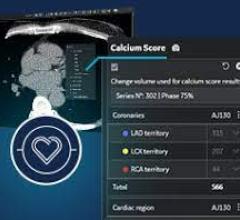
Today, cloud-native analytics can automate data acquisition and synthesize complex data from multiple sources. Here, we examine what technology leaders can do in the present to facilitate future advancements in cardiovascular data and analytics.
Technology leaders have enormous potential to help providers realize richer, more meaningful insights in the years ahead. Yet for many, the pursuit of clearer insight is a fog-filled experience. What should you be focusing on today? What should you be avoiding? And where do you even start?
To help answer these questions, I connected with Dr. Jennifer Hall who is data science expert in the cardiology space. The first part of our conversation focused on helping healthcare organizations overcome common challenges with cardiovascular data. In this article, we cast our gaze to the future of cardiovascular data and analytics.
What should technology leaders do today to help ensure a brighter tomorrow?
How can data consolidation and analytics drive growth?
According to Dr. Hall, this is the number one question a business owner or CEO will ask — and should ask. Data consolidation can cut down on time and costs spent finding, retrieving, and sorting through data.
The more automated the better, as automation frees up staff to focus on more important things that drive revenue. Analytics can be done on data that drive the business just as they are done on imaging.
Analytics on imaging can lead to improvements and more accurate predictions of length of stay, procedural requirements, and staffing needs.
For example, suppose you were just hired by a large hospital system. What should your “getting started” process look like? Per Dr. Hall, the first two things you’ll want to figure out are where all your data is located and what your priorities are for driving business growth. Once you understand where all your data resides and what you ultimately want to do with it, a step-by-step process will emerge.
For instance, from a clinical perspective, you might want more accurate predictions on length of stay, procedural requirements, and staffing needs. From a benchmarking perspective, you might track your organization’s progress with the new analytics. Are guidelines being followed? Are you meeting process measures? Are you adhering to data-quality standards?
From a research perspective, you might build risk models with AI and machine learning that could be tested and improved with other data. Start small.
Cloud-based solutions can facilitate advancement in cardiovascular data and analytics
A cloud-based solution provides an organization with new tools, the latest security, and the ability to work with data across organizations. When data is in the cloud, one can focus their attention on the data. Those using the cloud spend less time dealing with architecture and troubleshooting IT issues than they do when cardiology data is stored on premise.
As Dr. Hall notes, we are interacting with AI and machine learning throughout our day — on our phones, on our computers, and as we stream our favorite shows. AI and machine learning have a role in improving healthcare — but they are not meant to replace clincial care.
Preparing cardiovascular data for machine learning and AI
An important step after data consolidation is preparing your data for a simple analysis using machine learning or AI. To do this, groups usually use software that is simply a pipeline to process all different types of files into data types that can be “read and understood” by your machine learning or AI software. Junk in equals junk out. Thus, this step is critical for success. Working backward, consolidating the data and categorizing all the different file types helps build the list of features/constraints that you’ll need to know before purchasing the pipeline software.
Don’t delay your advancement of cardiology data and analytics
When discussing the advancement of cardiology data and analytics, we tend to focus on shorter-term indicators of success, which is important. Near-term boosts in efficiency and effectiveness should be expected — and tracked — but they shouldn’t be the only consideration.
One must also consider what an optimal environment for cardiology will look like five or 10 years down the road. How can you create an environment in which care is continually improved? How can you create an environment that will attract the top practitioners to your organization? How can you protect or improve your organization’s reputation among the practitioners and patients of tomorrow?
Your potential to bring about meaningful change is enormous, so aim high and stay true to your aspirations. As Dr. Hall says,” There’s always a solution.”
The future of cardiology data and analytics is in the cloud. Learn more about how our cloud-based cardiology solutions can help your organization minimize complexity, cut costs, and increase productivity.
Ray Hall is cloud solutions product manager at Change Healthcare.


 May 01, 2024
May 01, 2024 








